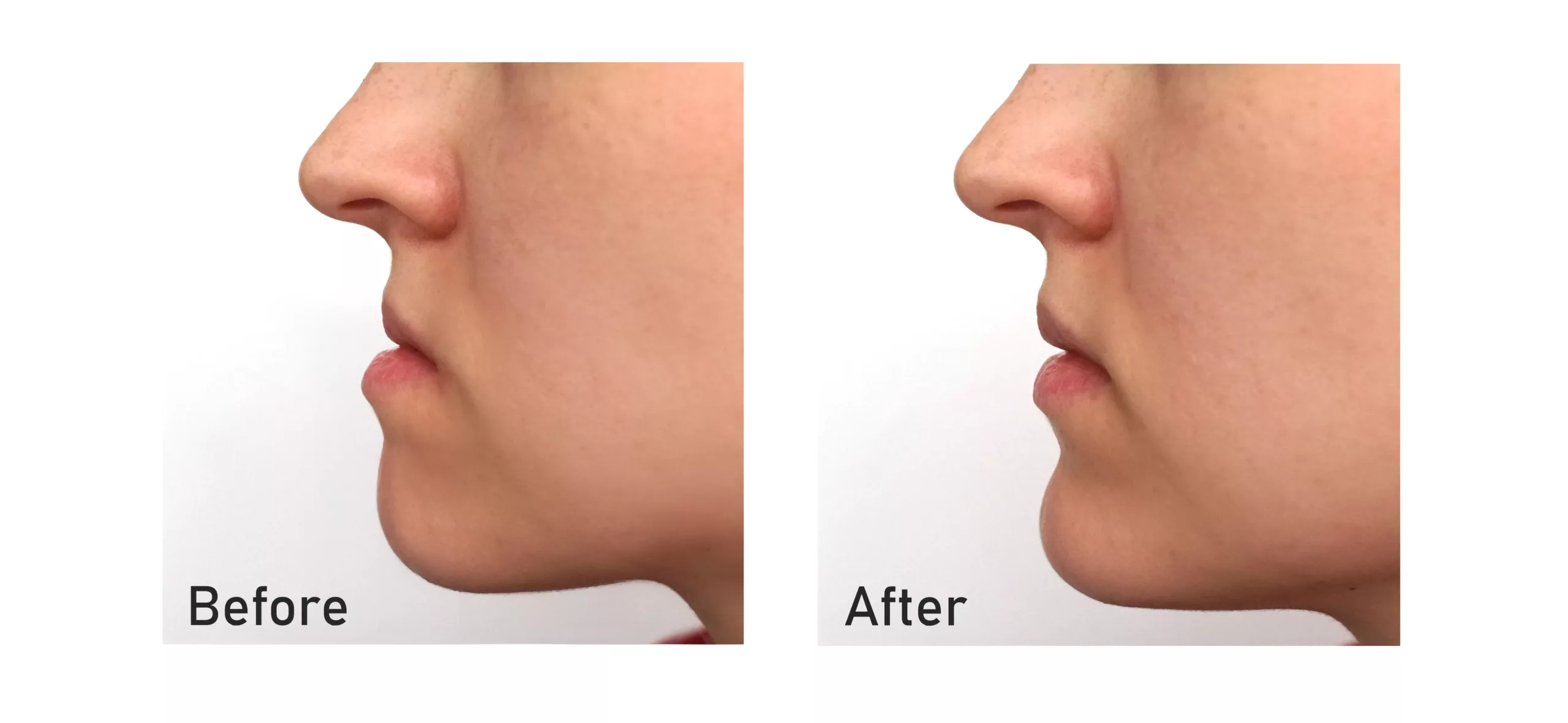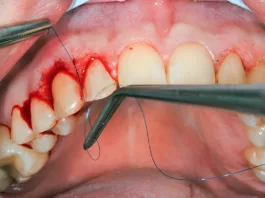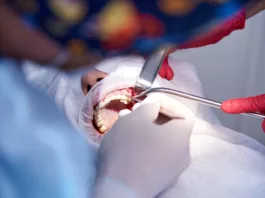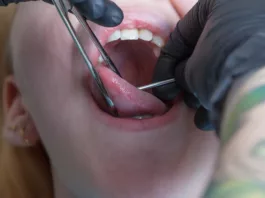Orthognathic surgery is a therapeutic procedure. It refers to any surgery performed on the jawbone. It is most commonly used to correct dentofacial abnormalities.
What is Orthognathic Surgery?
Orthognathic surgery refers to any surgical manipulation of the jawbone and its associated facial skeleton. “Orthognathic” is derived from Greek and literally means “straight jaws,” as it is used to correct the alignment of your jaw. It is performed by oral and maxillofacial surgeons. Most types of orthognathic surgery only involve incisions to the inside of your mouth and oral cavity.1Patel, K. (2022, October 21). Orthognathic Surgery: Background, History of the Procedure, Problem. Medscape.com; Medscape. https://emedicine.medscape.com/article/1279747-overview
Types of Orthognathic Surgery
There are many different types of orthognathic surgery. All of them alter the jawbone or surrounding structures. As a result, the surgeon can change their position to correct misalignments that are causing you pain and discomfort.
| Maxillary Osteotomy | Surgery to correct the upper jaw or maxilla. |
| Mandibular Osteotomy | Surgery to correct the lower jaw or mandible. |
| Bimaxillary Osteotomy | Surgery to correct both the upper and lower jaw. |
| Genioplasty | Surgery to correct the chin |
In addition to the different types of orthognathic surgery, there are many different techniques that the surgeon can use depending on the type of issue you want to correct. Some include2Kashani, H., & Rasmusson, L. (2016, August 31). Osteotomies in Orthognathic Surgery. ResearchGate; unknown. https://www.researchgate.net/publication/307979979_Osteotomies_in_Orthognathic_Surgery
| LeFort Osteotomies | Different types of surgeries follow the “lines” in which facial bones break. |
| Sagittal Split Osteotomy | Splitting the mandible along its length to align it forward or backward |
| Rapid Palatal Expansion Osteotomy | Splitting the upper jaw along the palate and expanding the upper dental arch. |
Indications of Orthognathic Surgery
This surgery is performed to fix conditions of the jaw and teeth when no other treatment is possible or when previous treatment is not improving the symptoms.3Larsen, M. K. (2017). Indications for Orthognathic Surgery – A Review. Oral Health and Dental Management; https://www.semanticscholar.org/paper/Indications-for-Orthognathic-Surgery-A-Review-Larsen/1e1499d3aa1e8d0baa8aa9158039a6fc860a6264
Malocclusion
Malocclusion refers to a misaligned “bite” when you put your teeth together while closing your mouth. Different types of malocclusion could necessitate orthognathic surgery, especially when non-surgical orthodontics, like braces, don’t help.
| Underbite | Lower teeth extend past upper teeth. |
| Overbite | Upper teeth extend past lower teeth. |
| Open bite | Upper and lower teeth don’t touch when you close your mouth. |
| Overcrowding | There is not enough space in the jaw to fit all your teeth. |
Traumatic Injuries
The face is one of the most commonly injured structures during accidents, sports, and violence. As a result, you can sustain traumatic injuries to your jaw, which could need orthognathic surgery to be fixed, such as:
- Mandibular fractures
- Maxillary fractures (LeFort I, II, III)
- Dentoalveolar trauma
- Temporomandibular joint (TMJ) dislocation
Congenital Deformities
A number of congenital medical problems cause deformities in your facial skeleton, teeth, and jaws. They cause problems with chewing, swallowing, breathing, and aesthetic concerns. As a result, they need to be corrected through orthognathic surgery. Examples include:
- Cleft lip and palate
- Pierre Robin sequence
- Hemifacial microsomia
- Apert syndrome
TMJ Disorders
TMJ disorders are one of the most common indications of orthognathic surgery. They cause widespread symptoms like immense pain while chewing, frequent headaches, tightness, and pain in your neck and facial muscles, as well as constant popping and locking of your jaw.
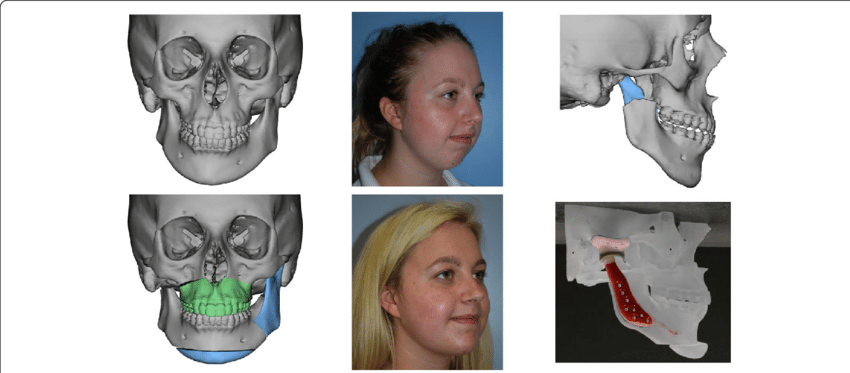
When these problems cannot be treated with physiotherapy, painkillers, or wearing a splint (if possible), your dentist will advise you to undergo orthognathic surgery to correct the underlying malalignment.
Facial Asymmetry
Many people undergo this surgery to correct severe jaw and tooth problems that cause noticeable facial asymmetry. Orthognathic surgery improves these cosmetic issues and the mental health symptoms caused by not feeling confident in one’s skin.
Sleep Apnea
Sleep apnea is caused by abnormal tongue or palette position. During apnea episodes, you can suddenly stop breathing at night. Orthognathic surgery can correct it and help you sleep better.
Contraindications of Orthognathic Surgery
There are few contraindications of orthognathic surgery. The only significant contraindications are age and an action infection in your mouth.
- Young age as bone growth can cause further malocclusion and relapse
- Existing periodontal disease
- Poorly controlled systemic disease, e.g., uncontrolled diabetes, severe hypertension
- Medical conditions where anesthesia cannot be administered
- Debilitating mental illness where the patient cannot follow instructions about post-op care
How can you Prepare for Orthognathic Surgery?
Preparing for orthognathic surgery includes consultation with healthcare professionals, who will assess your health and tell you which surgery is best for you. You also need to seek orthodontic treatment to make your jaw surgery a success.
History & Examination
Your doctor will get a thorough medical and dental history to make sure you are the right candidate for this surgery and inquire about the following:
- Any previous dental procedures, e.g., braces, extractions, implants
- You must also disclose any medical conditions that can influence the effect anesthesia has on your body, such as cardiovascular disease, metabolic disorders, or allergies.
- What treatments you are currently undergoing for your symptoms, e.g., facial exercises, splint, painkillers, muscle relaxants
- If you smoke or drink alcohol, it can affect your gum health and the outcomes of orthognathic surgery.
Investigations
Several imaging and lab tests must be conducted to check for abnormalities in your jaw and teeth. The specific ones include:
- Panoramic radiograph/ OPG shows a comprehensive view of your teeth and jaws
- Lateral cephalometric radiograph analyzes dental alignment and skeletal relationships of your facial structures
- Cone beam computed tomography for 3D imaging of your teeth and jaws
- Dental impressions and bite registration for the analysis of your occlusion
- Standardized photographs to compare your facial features4Kang, S.-H., Kim, M.-K., Park, S.-Y., Lee, J.-Y., Park, W., & Lee, S.-H. (2011). Early Orthognathic Surgery With Three-Dimensional Image Simulation During Presurgical Orthodontics in Adults. The Journal of Craniofacial Surgery/the Journal of Craniofacial Surgery, 22(2), 473–481. https://doi.org/10.1097/scs.0b013e318207b95c
In addition to specific dental tests, you will also undergo routine pre-op lab investigations to make sure you are medically fit for orthognathic surgery, including:
- Full blood count
- Blood chemistry
- Coagulation profile
- Blood glucose levels
- Infection screening for hepatitis and HIV
- Blood typing and crossmatch
Orthodontic Treatment
Before your orthognathic surgery, you will have to wear pre-surgical orthodontics for 12-18 months— in case of braces. This helps change the alignment of your dental structures so that the surgeon can accurately reposition your jawbone during your surgery. Examples of orthodontic measures before this surgery include:
- Traditional metal braces to control tooth movement
- Temporary anchorage devices to give additional anchoring for teeth
- Palatal expanders to widen your palatal arch with external pressure
- Interarch elastics to apply directional support on teeth
Informed Consent
Your doctor will explain all the steps, possible risks, and expected outcomes of orthognathic surgery and then ask you to sign a document as proof of your fully informed consent.
Step-by-Step Procedure of Orthognathic Surgery
This surgery is performed by a maxillofacial surgeon in a hospital or advanced dental clinic setting under general anesthesia to ensure no discomfort.
Before Orthognathic Surgery Starts:
Upon admission, a nurse or medical assistant will check your vitals and ensure you are in sound health. You will change into a sterile hospital gown and remove all accessories. A nurse will ensure you have taken all necessary pre-op medications and establish an IV line access. You will be given anesthesia just before the start of the surgical procedure.
During Orthognathic Surgery:
This surgery usually takes over an hour. During this procedure, you are unconscious and do not experience any pain.
- The surgeon makes small incisions within your mouth so there is no visible scarring on your jaw, chin, or area near your mouth.
- They cut into your soft tissues to reach your jawbone.
- After that, the surgeon carefully cuts the jawbone and realigns it to achieve the desired result. This can involve repositioning the upper jaw (maxilla), the lower jaw (mandible), or both.
- Once the ideal position and movement of your jaw have been achieved, bone plates, screws, and orthodontic appliances like wires, elastics, and bands are used to secure your bones in place.
- Any other changes, such as fixing your chin by cutting into your chinbone, are done.
- Sometimes, you may require a graft from any other bone to be placed in your jawbone.
- After a final assessment to ensure all structures are well aligned, the surgeon closes all incisions with sutures.
After Orthognathic Surgery:
Once the surgery is over, you will be taken to a recovery room and then transferred to a hospital room when you are awake and stable. Your vitals will be monitored, and you will be given painkillers. When awake, a healthcare provider will guide you through post-op care.

Your hospital stay can last 1 to 4 days, depending on the kind of orthognathic surgery you underwent. Your jaws might be wired shut together, and you may need to wear a splint. You won’t be able to speak or eat for a few days.
After your discharge, you will be asked to visit for follow-up appointments. During these sessions, your doctor will check if the outcomes are ideal and if you need any more treatment. You will have to undergo orthodontic treatments to make sure the alignment stays permanent and that no secondary malocclusion develops after orthognathic surgery.
How to Improve Recovery after Jaw Surgery?
Even though your jaw starts healing within six months of surgery, complete healing takes around twelve weeks. Your doctor will give you specific instructions to follow to improve this healing process and to prevent any post-operative complications of jaw surgery, including:
- Follow a liquid diet and gradually make the transition to solid foods
- Practice oral hygiene with a gentle toothbrush.
- Use a syringe to clean surgical sites with saline.
- Take medications to reduce pain and swelling.
- Practice gentle jaw exercises as instructed.
- Avoid smoking and alcohol.
- Attend all follow-up appointments, especially those that require the removal or insertion of any wires, screws, or orthodontic devices.5Wahlstrom, D., Toscano, C., & Havard, D. (2023). Enhanced recovery after orthognathic surgery: a retrospective comparison study of 56 patients. British Journal of Oral & Maxillofacial Surgery/British Journal of Oral and Maxillofacial Surgery, 61(2), 171–175. https://doi.org/10.1016/j.bjoms.2023.01.001
Final Results of Jaw Surgery
Once the swelling has resolved, you will start seeing the results of orthognathic surgery. For lower jaw and chin surgeries, you see the desired results within four months, whereas upper jaw surgery can take six to eight months. Over 85 to 95% of people report feeling satisfied with the results of orthognathic surgery.6Zamboni, R., Reis, R., Myrian Camara Brew, Elken Gomes Rivaldo, Marcylene Arruda Braz, Grossmann, E., & Caren Serra Bavaresco. (2019). Impacts of Orthognathic Surgery on Patient Satisfaction, Overall Quality of Life, and Oral Health-Related Quality of Life: A Systematic Literature Review. International Journal of Dentistry, 2019, 1–15. https://doi.org/10.1155/2019/2864216
Risks & Complications of Orthognathic Surgery
Like any other invasive surgical procedure, this surgery has been associated with various risks and complications over the years. Fortunately, these complications are easily treatable if detected early. They can occur both during the surgery and afterward.
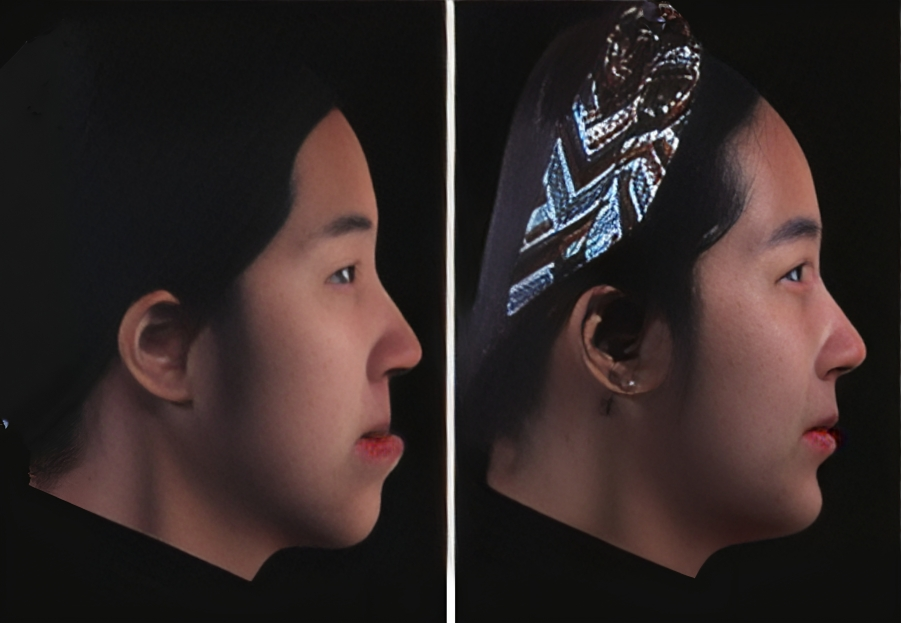
If left unmanaged, the complications can have serious consequences. Some risks and complications include:
- Hemorrhage,
- Relapse of orthodontic issues
- Injury to teeth
- Change of nasal structure
- Infection
- Nerve damage
- Difficulty breathing
- Thromboembolism
- Hearing issues7Kim, Y.-K. (2017). Complications associated with orthognathic surgery. Journal of the Korean Association of Oral and Maxillofacial Surgeons/Journal of the Korean Association of Oral and Maxillofacial Surgeon/Daehan Gu’gang Ag’anmyeon Oe’gwa Haghoeji, 43(1), 3–3. https://doi.org/10.5125/jkaoms.2017.43.1.3
How Painful is Orthognathic Surgery?
This procedure is not painful in itself. Almost all types of jaw surgery are performed under general anesthesia, so you don’t feel any pain. However, you can expect to feel significant pain afterward. Fortunately, it can be managed well with painkillers and following your doctor’s instructions, e.g., not eating solid food or keeping surgical sites clean.8Abdulmalik Alyahya, Abdulwahab Aldubayan, Swennen, G. R. J., & Essam Al-Moraissi. (2022). Effectiveness of different protocols to reduce postoperative pain following orthognathic surgery: A systematic review and meta-analysis. British Journal of Oral & Maxillofacial Surgery/British Journal of Oral and Maxillofacial Surgery, 60(7), e1–e10. https://doi.org/10.1016/j.bjoms.2022.03.013
Is Orthognathic Surgery a Major Surgery?
Orthognathic surgery is a major surgical procedure. It is performed under general anesthesia, and recovery can take months. Like any other invasive medical procedure, you should weigh the pros and cons of jaw surgery and discuss it thoroughly with your doctor before deciding.
Conclusion
In conclusion, orthognathic surgery is the name given to any surgery that involves manipulating the jawbone for functional and aesthetic purposes. It is performed under general anesthesia, and the desired results can be seen after a few months. Most patients express satisfaction and improved quality of life after undergoing orthognathic surgery. However, this surgery is not preferred in young age, patients with systemic or mental illness, and those who can not tolerate anesthesia.
Refrences
- 1Patel, K. (2022, October 21). Orthognathic Surgery: Background, History of the Procedure, Problem. Medscape.com; Medscape. https://emedicine.medscape.com/article/1279747-overview
- 2Kashani, H., & Rasmusson, L. (2016, August 31). Osteotomies in Orthognathic Surgery. ResearchGate; unknown. https://www.researchgate.net/publication/307979979_Osteotomies_in_Orthognathic_Surgery
- 3Larsen, M. K. (2017). Indications for Orthognathic Surgery – A Review. Oral Health and Dental Management; https://www.semanticscholar.org/paper/Indications-for-Orthognathic-Surgery-A-Review-Larsen/1e1499d3aa1e8d0baa8aa9158039a6fc860a6264
- 4Kang, S.-H., Kim, M.-K., Park, S.-Y., Lee, J.-Y., Park, W., & Lee, S.-H. (2011). Early Orthognathic Surgery With Three-Dimensional Image Simulation During Presurgical Orthodontics in Adults. The Journal of Craniofacial Surgery/the Journal of Craniofacial Surgery, 22(2), 473–481. https://doi.org/10.1097/scs.0b013e318207b95c
- 5Wahlstrom, D., Toscano, C., & Havard, D. (2023). Enhanced recovery after orthognathic surgery: a retrospective comparison study of 56 patients. British Journal of Oral & Maxillofacial Surgery/British Journal of Oral and Maxillofacial Surgery, 61(2), 171–175. https://doi.org/10.1016/j.bjoms.2023.01.001
- 6Zamboni, R., Reis, R., Myrian Camara Brew, Elken Gomes Rivaldo, Marcylene Arruda Braz, Grossmann, E., & Caren Serra Bavaresco. (2019). Impacts of Orthognathic Surgery on Patient Satisfaction, Overall Quality of Life, and Oral Health-Related Quality of Life: A Systematic Literature Review. International Journal of Dentistry, 2019, 1–15. https://doi.org/10.1155/2019/2864216
- 7Kim, Y.-K. (2017). Complications associated with orthognathic surgery. Journal of the Korean Association of Oral and Maxillofacial Surgeons/Journal of the Korean Association of Oral and Maxillofacial Surgeon/Daehan Gu’gang Ag’anmyeon Oe’gwa Haghoeji, 43(1), 3–3. https://doi.org/10.5125/jkaoms.2017.43.1.3
- 8Abdulmalik Alyahya, Abdulwahab Aldubayan, Swennen, G. R. J., & Essam Al-Moraissi. (2022). Effectiveness of different protocols to reduce postoperative pain following orthognathic surgery: A systematic review and meta-analysis. British Journal of Oral & Maxillofacial Surgery/British Journal of Oral and Maxillofacial Surgery, 60(7), e1–e10. https://doi.org/10.1016/j.bjoms.2022.03.013

